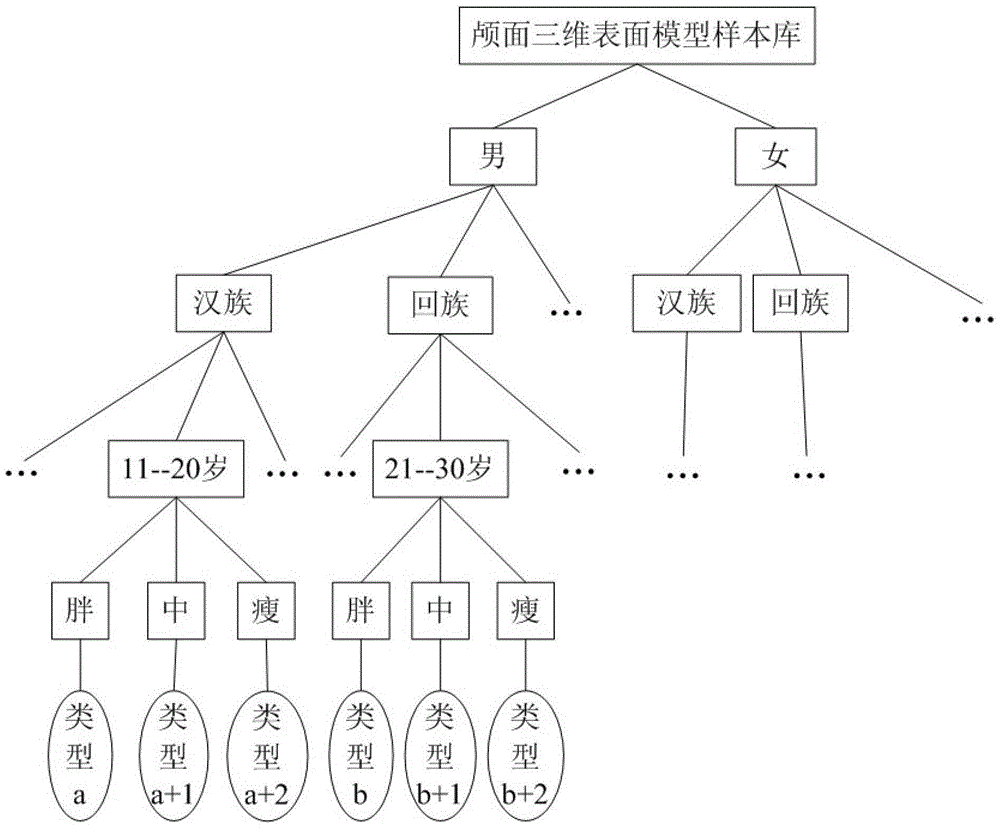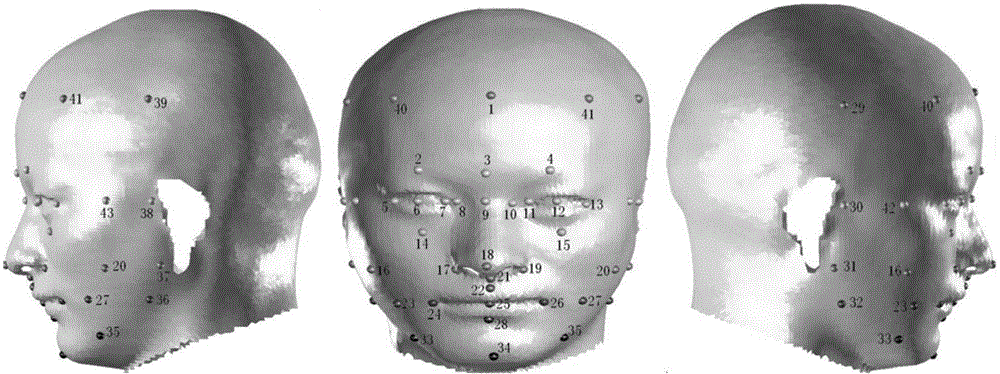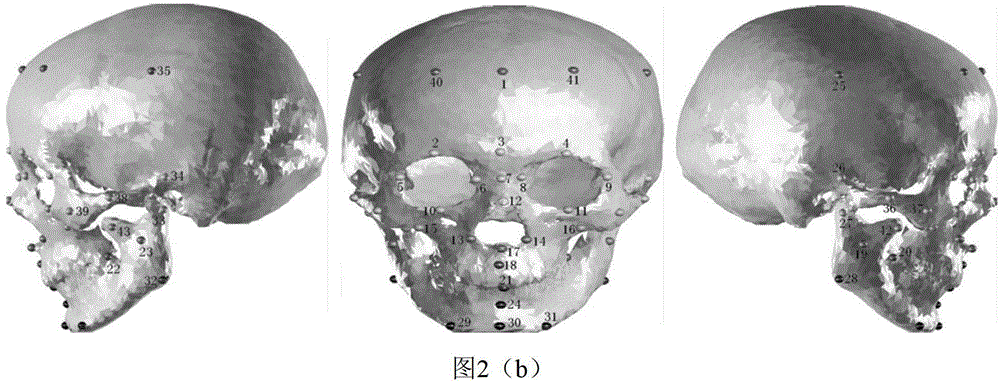Model library for craniofacial restoration and craniofacial restoration method
A model library and craniofacial technology, applied in 3D modeling, image data processing, instruments, etc., can solve the problem of low representation ability of statistical deformable models
- Summary
- Abstract
- Description
- Claims
- Application Information
AI Technical Summary
Problems solved by technology
Method used
Image
Examples
Embodiment 1
[0287] This embodiment is based on the craniofacial database formed by the complete set of tomographic imaging data of a large number of living craniofacial samples collected by a spiral CT (Computer Tomography) machine, wherein the CT machine scans the human head every 1.5mm , to obtain a set of tomographic imaging data consisting of about 200 to 300 CT images, using the craniofacial restoration model library of the present invention for such as Figure 5 (a) The skull to be restored is restored. In this example, L=10 in step (3.1), and Q in step (4.3.2) 1 =15, J=4 in step (4.3), λ in step (4.3.7) j = 1 / 4 (where j=1,2,3,4), α=0.05 in step 7, the restoration result is as follows Figure 5 (c) shown.
[0288] Fig. 2 is a schematic diagram of coding and position calibration of facial skin and skull feature points in this embodiment, and the round spheres on the surface of the model represent feature points, wherein Fig. 2 (a) is a schematic diagram of coding and position c...
Embodiment 2
[0293] This embodiment is based on the craniofacial database formed by the complete set of tomographic imaging data of a large number of living craniofacial samples collected by a spiral CT (Computer Tomography) machine, wherein the CT machine scans the human head every 1.5mm , obtain a set of tomographic imaging data consisting of about 200-300 CT images, adopt the road surface restoration model library of the present invention for such as Figure 6 (a) The skull to be restored is restored. In this example, L=10 in step (3.1), and Q in step (4.3.2) 1 =15, J=4 in step (4.3), λ in step (4.3.7) j = 1 / 4 (where j=1,2,3,4), α=0.05 in step 7;
[0294] The restored result is as Figure 6 (c), in contrast to that, Figure 6 (b) is the facial restoration result based on the zonal statistical model, Figure 6 (d) is the three-dimensional surface model of the original skin corresponding to the skull to be restored.
PUM
 Login to View More
Login to View More Abstract
Description
Claims
Application Information
 Login to View More
Login to View More - R&D
- Intellectual Property
- Life Sciences
- Materials
- Tech Scout
- Unparalleled Data Quality
- Higher Quality Content
- 60% Fewer Hallucinations
Browse by: Latest US Patents, China's latest patents, Technical Efficacy Thesaurus, Application Domain, Technology Topic, Popular Technical Reports.
© 2025 PatSnap. All rights reserved.Legal|Privacy policy|Modern Slavery Act Transparency Statement|Sitemap|About US| Contact US: help@patsnap.com



